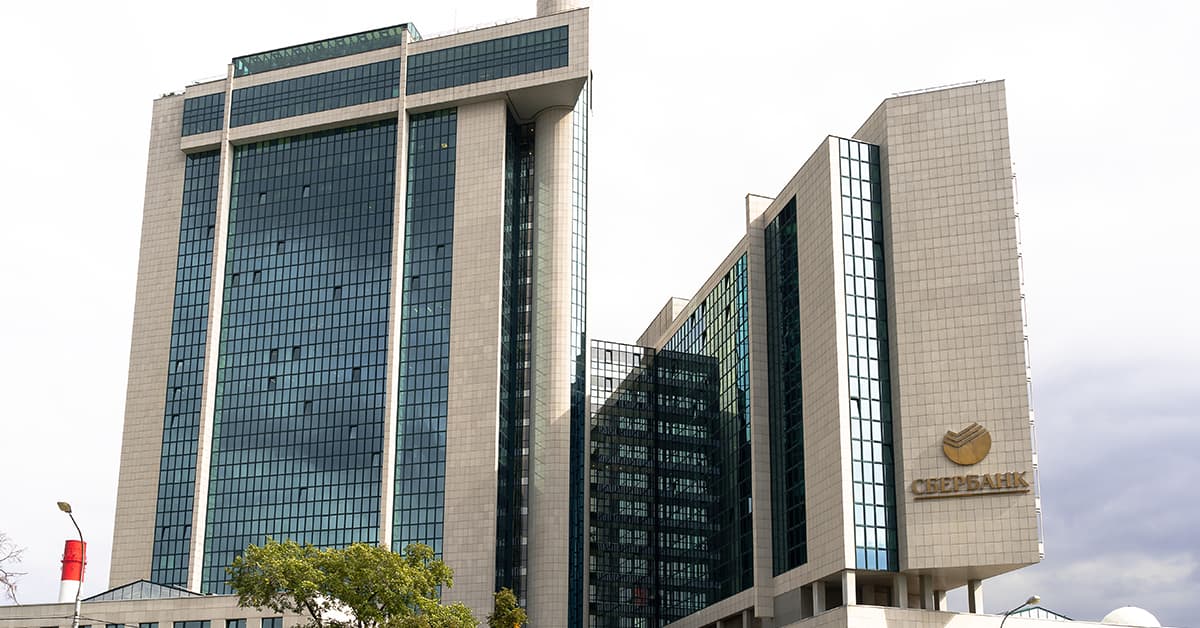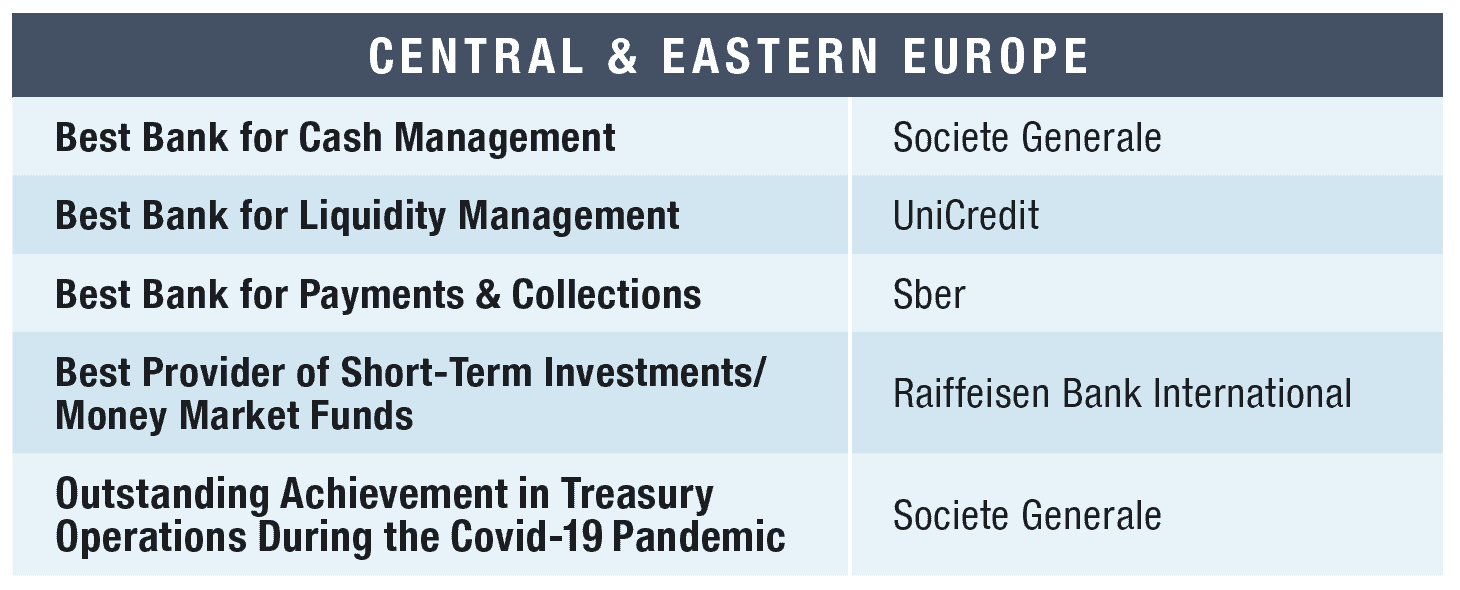E-banking, blockchain solutions and electronic signatures are some of the new and improved services that banks hope will strengthen bonds with their beleaguered clients.

Banks in Central and Eastern Europe (CEE) played a critical role during the Covid-19 pandemic. Now they are being challenged to keep up with—and figure out how to benefit from—the surge in digital usage.
According to a September 2020 Covid-19 Digital Sentiment Insights survey by McKinsey, CEE countries had gained 12 million new users of online services since the pandemic began—more than the populations of Slovakia, Croatia and Slovenia put together.
Businesses are responding. In a study conducted last July and August by the global law firm CMS, almost two-thirds (65%) of companies in CEE said digitalization is a priority. This will shore up the region’s many small and midsize enterprises, which have lagged behind their counterparts in Western Europe.
Societe Generale, Global Finance’s 2021 Best Bank for Cash Management and award winner for Outstanding Achievement in Treasury Operations During the Covid-19 pandemic in CEE, intensified its focus on electronic banking channels in CEE countries, including the introduction of mobile e-banking and solutions using M-Tokens, which provide authentication for account management and access to account data via mobile devices. The bank has also prioritized listening to client needs—for example, by organizing conference and video calls with clients.
“This pandemic taught us that beyond the products and services a bank can provide its corporate customers, our true force relies on the intimacy we create in the long run with them: hearing their concern and requests, and developing individual and qualified advisory to respond to them,” says Alexandre Maymat, head of Global Transaction and Payment Services. “I believe that it is through our capacity to keep in touch with our clients very regularly, understand and meet their needs, that we have best supported them in this unprecedented crisis.”
UniCredit, regional choice for Best Bank for Liquidity Management, differentiates itself by offering unique factoring solutions. An e-banking solution, BusinessNet, is designed for both cross-border and country-specific needs. Another specialized solution, EuropeanGate, allows corporate customers to operate their accounts or those of their subsidiaries in any UniCredit principal bank through a single point of entry. Luca Corsini, UniCredit’s co-head of Global Transaction Banking, says this provides multinationals with both cost and efficiency savings as well as the ability to integrate into any e-banking infrastructure.
Sber, formerly SberBank, Best Bank for Payments and Collections, expanded its mobile offerings last year as well when it launched SberPay for both consumers and businesses. “Corporate clients enjoy many advantages by utilizing SberPay in e-commerce,” says Kirill Tsarev, deputy chairman of the executive board and head of the bank’s retail business. “These include fast and simple service integration, increased conversion [rate of sales] and familiar and transparent acquiring rates.”
Although SberPay appeared only six months ago, it is now available on 65,000 partner websites and growing. Contactless payments in offline stores are available to Visa and Mastercard holders and users of Android smartphones through nearly all POS terminals in Russia that have NFC modules. Sber has also partnered with Russia’s S7 Airlines to automate travel agency payments via blockchain by tokenizing payments before transferring them to S7.
Electronic signatures, too, have assumed a more prominent role during the pandemic. Corsini says clients are coming to rely on digital signatures to save them time and paperwork. It helps the bank, too. “Essentially,” says Corsini, “we are leveraging technology in each phase of the process in order to be completely comfortable from a compliance perspective.”




